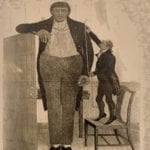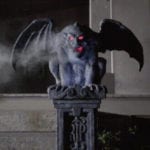 Creepy
Creepy  Creepy
Creepy  Movies and TV
Movies and TV 10 Movies That Get Elite Jobs Right, According to Experts
 Weird Stuff
Weird Stuff 10 Times Real Laws Were Based on Bizarre Hypotheticals
 Animals
Animals 10 Inspiring Tales of Horses Being Human
 Mysteries
Mysteries Top 10 Haunting Facts About the Ghost Ship MV Alta
 History
History 10 Surprising Stories About the Texas Rangers
 Humans
Humans 10 Philosophers Who Were Driven Mad by Their Own Theories
 Miscellaneous
Miscellaneous 10 Video-Game-Worthy Weapons and Armors from History
 Weird Stuff
Weird Stuff 10 Psychics Who Accurately Predicted Wartime Events
 The Arts
The Arts 10 Pieces of Art Inspired by a Broken Heart
 Creepy
Creepy 10 Death Superstitions That Will Give You the Creeps
 Movies and TV
Movies and TV 10 Movies That Get Elite Jobs Right, According to Experts
 Weird Stuff
Weird Stuff 10 Times Real Laws Were Based on Bizarre Hypotheticals
Who's Behind Listverse?

Jamie Frater
Head Editor
Jamie founded Listverse due to an insatiable desire to share fascinating, obscure, and bizarre facts. He has been a guest speaker on numerous national radio and television stations and is a five time published author.
More About Us Animals
Animals 10 Inspiring Tales of Horses Being Human
 Mysteries
Mysteries Top 10 Haunting Facts About the Ghost Ship MV Alta
 History
History 10 Surprising Stories About the Texas Rangers
 Humans
Humans 10 Philosophers Who Were Driven Mad by Their Own Theories
 Miscellaneous
Miscellaneous 10 Video-Game-Worthy Weapons and Armors from History
 Weird Stuff
Weird Stuff 10 Psychics Who Accurately Predicted Wartime Events
 The Arts
The Arts 10 Pieces of Art Inspired by a Broken Heart
10 Real-Life Inspirations For Mythical Things
What inspires us to tell stories of monsters and mythic heroes? Is it purely a product of human imagination, or do these stories originate from some truth? Let’s go beyond myth and into history to discover which of the world’s legends are true, not true . . . or somewhere in between.
10Gilgamesh
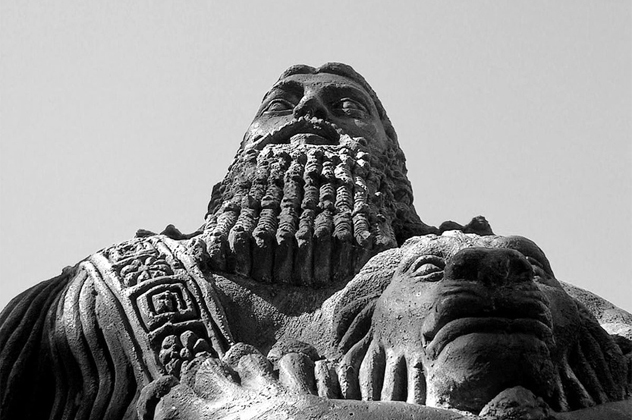
The Epic of Gilgamesh, recorded on 12 clay tablets, is one of the oldest surviving works of literature. It follows the tale of Gilgamesh, the lustful king of Uruk, as he leaves everything behind to go on monster-slaying adventures. When his sidekick dies, Gilgamesh embarks on a new quest to obtain immortality—a quest that ultimately fails. He returns to Uruk and is later entombed at the spot where the Euphrates River parted.
When we go as deep into the past as 2600 B.C., it becomes difficult to separate history from myth. Gilgamesh appears on the Sumerian Kings List, but his rule is put at an exaggerated 126 years. The reigns of his son and grandson, however, are put at a more realistic 30 and 15 years. Scriptural evidence also confirms the existence of historical figures associated with him. In 2003, an archaeological team digitally mapped the city of Uruk, which now lies buried beneath the Iraqi desert. The images revealed the city to be as described in the epic, including a kingly tomb under a place where the Euphrates once flowed. The origin of the myth of Gilgamesh may in fact be the man himself.
9Griffin
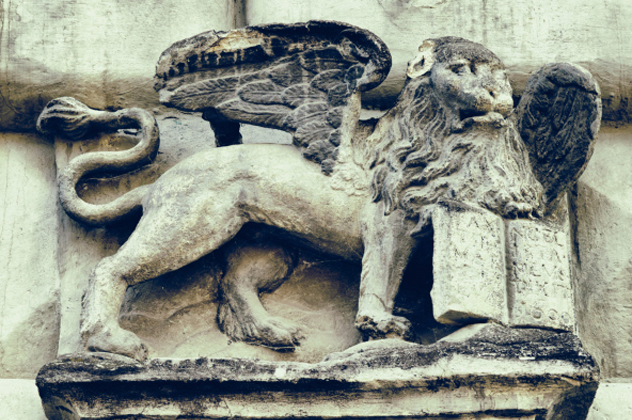
Griffins are winged creatures with the body of a lion and the head of an eagle, and are known for guarding treasure. They are also symbols of divine power that often appear on crests and emblems. Griffins are represented in art most often in ancient Greece, but appear in Persia and Egypt as well, dating as far back as 3300 B.C.
Researcher Adrienne Mayor believes that the griffin myth can be traced back to dinosaur bones found in gold mines in the Gobi Desert. The region where the mines are is rife with the fossils of protoceratops—a beaked dinosaur with a body the size of a lion. Protoceratops bones are so prevalent there that many amateurs have seen them uncovered by nothing more than wind blowing the sand away. Eminent paleontologist Jack Horner, the man who inspired Jurassic Park’s Alan Grant, likes the theory. He finds it amusing that ancient peoples were able to deduce the dinosaur’s truer bird-like structure better than more modern scientists, who imagined them purely as smooth-skinned lizards.
8Kappa

A kappa is a mythical Japanese monster said to dwell in streams and shallow rivers. It’s most commonly described as a fish or turtle creature about the size of a small child, with scaly skin, sharp teeth, and claws. Their unique trait is that they have concave, bowl-like heads that, when filled with water, give them superhuman strength. It is said that the kappa will snatch animals and people near the water’s edge and drag them under to feast on them. These horrifying yet quirky things also enjoy cucumbers and Sumo wrestling.
Surely there can’t be a monster such as this, right? Well you’d be surprised what lurks in shallow water. Jeremy Wade of the television show River Monsters went looking for the historical basis of the kappa in the episode “Cold-Blooded Horror.” Toward the end, Wade encountered what he believed to be the source of the kappa myth: the Japanese Giant Salamander. Adults are bigger than the one in the episode, growing to about 25 kilograms (55 lb) and 1.5 meters (5 ft) in length. The giant salamander has talons and sharp teeth, and its skin is covered in mucus. While its head is not bowl-shaped, it is flat enough that you could see how people might exaggerate. When threatened, it secretes a milky, sticky substance that smells like peppers.
7Sirens

Sirens were said to be malicious creatures who appeared as beautiful women. They sang sweet, hypnotic songs that drove sailors mad and lured them to crash against rocky shores. In Germanic myth, there is a siren named Lorelei who lives on a rock looming over the Rhine River. Many sailors claim to have heard a woman singing sweetly on the Rhine River rock.
The alluring song of Lorelei is no myth, only it’s not a mystical creature doing the singing. The sounds of a strong river current combined with the noise of a nearby waterfall bounce off the walls of Lorelei’s rock, creating an echoing effect that sounds like a woman singing. Lorelei’s rock also happens to sit at the narrowest and most treacherous part of the river, where the current draws boats to the jagged shoreline. In the tale of Jason and the Argonauts, Orpheus defeats the sirens by playing a sweeter tune on his lyre, drowning out their song. In real life, Lorelei’s song has been drowned out by traffic, and can only be faintly heard today.
6Banshees
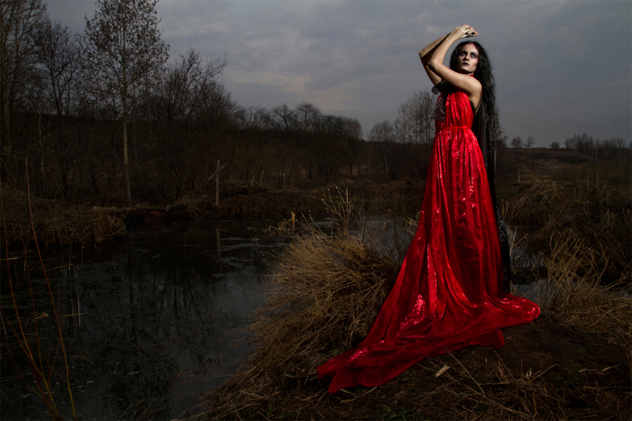
A banshee is an omen of death in Irish lore. It is a wailing spirit (technically a fairy) that appears if someone is about to die. If multiple banshees appear, the event signals the death of a great or important person.
At a traditional Irish funeral, there would typically be a woman—known as a keener—hired to sing a wailing lament for the fallen. Rich people would have multiple keeners, and legends grew around the most powerful clans claiming that their keeners were fairies. These fairy keeners could supposedly sense a clansman’s death even if they were far off in the distant parts of the world, making their lament the first news of a death in the family.
When Catholicism took over Ireland, keening was made taboo and it became all but extinct. But because both keeners and banshees traditionally had the same job, it’s probable that the banshee myth grew out of embellished memories of those funeral songstresses.
5The Giant Rat Of Sumatra

In “The Adventure of the Sussex Vampire,” detective Sherlock Holmes makes a single remark alluding to a previous adventure:
“Matilda Briggs was not the name of a young woman, Watson, . . . It was a ship which is associated with the giant rat of Sumatra, a story for which the world is not yet prepared.”
Sir Arthur Conan Doyle never wrote “The Tale of Sherlock Holmes and the Giant Rat of Sumatra,” nor does he mention it in any of the other Holmes books. Subsequent Holmes fan fiction authors went wild with the idea, though, interpreting the missing story in many different ways—from a hybrid creature on King Kong’s Skull Island to a Lovecraftian alien monster.
You might be tempted to believe that (as in “The Adventure of the Sussex Vampire,” where there was no actual vampire) there is no actual giant rat. Or that (as in “The Hound of the Baskervilles,” where the hound is an exaggeration) the rat is also overstated. But there is a real species literally known as the giant rat of Sumatra. They grow 48–63 centimeters (19–25 in) long and weigh 230–600 grams (8–21 oz). Whether Sir Arthur Conan Doyle referenced this specific species or coincidentally made up an already living creature is unknown.
4Behemoth
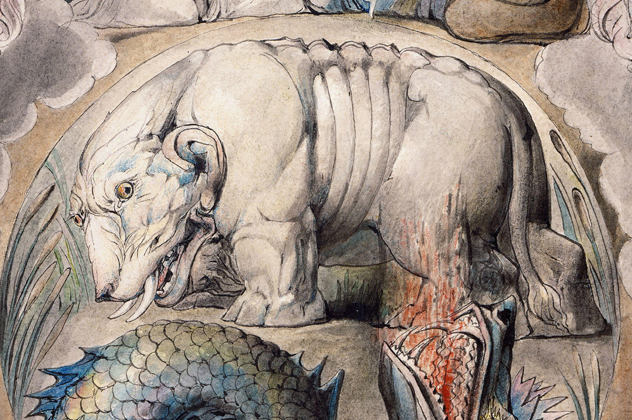
The Behemoth is a Biblical beast described by none other than God Himself in the Book of Job. The image above is a depiction of the Behemoth based on God’s description. Does it look familiar? It’s a hippopotamus.
Lines like “what power in the muscles of its belly” and “hidden among the reeds in the marsh. The lotuses conceal it in their shadow; the poplars by the stream surround it.” are dead giveaways. “Its tail sways like cedar” is a line that is harder to explain if you don’t write it off as an exaggeration. However, a hippo’s tail does have a brush-like appearance reminiscent of a cedar branch.
God describes the Behemoth to Job because he wants to illustrate his power. He wants Job to know the futility of questioning him, because only he could create something so powerful and then control it like a pet “with a ring through its nose.”
3Wendigo
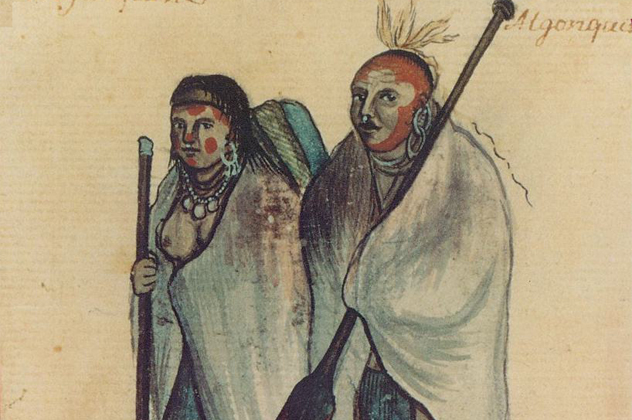
A wendigo is a malevolent supernatural being from Algonquin Native American lore that feasts on human flesh. It is tall and slender to the point that its skin appears to be shrink-wrapped over its bones. They also have spiritual powers that relate to winter and famine. Algonquin tribes believed that people who ate human flesh—especially if there was an alternate food source nearby—were doomed to transform into wendigos.
During famines in the cold northern winters, the Algonquins were pushed to the extremes of hunger. As scary as it sounds, to a few, their isolated families began to look like food to them. They feared turning into cannibals. Some even considered suicide to stop themselves. Modern psychologists have dubbed this paranoid condition “Wendigo Psychosis.” Its symptoms are culture specific, meaning it only happened to the Algonquins. Anthropologists believe that the wendigo myth was born from this condition which was unnamed at the time, its purpose being to reinforce the cultural taboo of partaking in human meat.
And if you’re wondering, the answer is yes—there are documented cases of people succumbing to this illness and behaving like wendigos.
2Beowulf
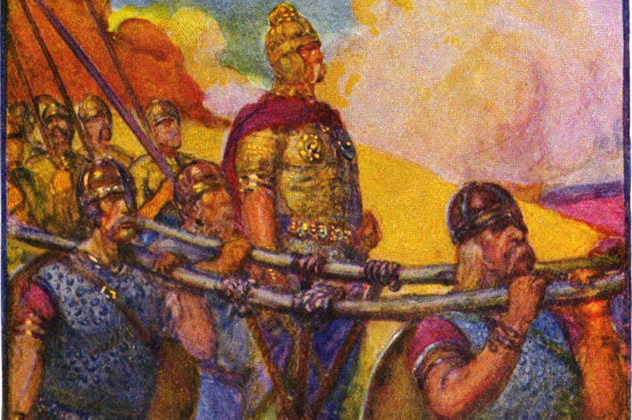
The Anglo-Saxon epic poem Beowulf is believed to be part legend and part history. It follows the life of the titular hero, from his battle against a fearsome troll named Grendel to his battle against Grendel’s mother, all the way to his eventual kingship. As king, Beowulf falls in battle to a dragon, but takes the foul lizard with him.
Over the course of the poem, Beowulf meets many different kings and tribes. Major players like Hygelac, King Hrothgar, and the Scyldings are generally accepted by historians to have existed—so much so that the epic is used as a source to glean more information about sixth-century Scandinavia. The excavated barrow of Eadgils has shown consistency with what’s described in Beowulf. And as for Beowulf himself, circumstantial evidence points to a massive barrow in Skalunda as his final resting place. So far it has not been excavated, and what lies within is unknown.
1Goliath
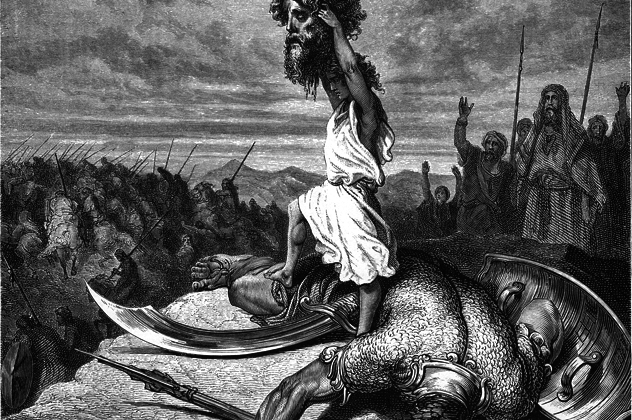
Giants towered over their contemporaries and inspired fear on the battlefield. Probably the most famous legendary giant was Goliath, standing at 2.97 meters (9 ft, 9 in). In the early ’90s, archaeologists uncovered the third-century bones of a true giant in Rome, his full height estimated to be . . . 2.02 meters (6 ft, 8 in). That’s not even tall enough to play center in the NBA. But the truth is, Goliath wouldn’t have been tall enough to play center either—the earliest writings of him put his height at 2.06 meters (6 ft, 9 in). His height was boosted in later editions.
The giant found in Rome was the first ancient skeleton found to conclusively display gigantism, a condition caused by the overproduction of growth hormones. The evidence lies in his skull, where there is damage consistent with a pituitary tumor, which would disrupt the pituitary gland and cause it to produce the excess hormones. Goliath’s height might not seem impressive today, but the average person was smaller back then. When you see a modern giant like Andre Roussimoff lifting a car while his friends change the tires, it’s not a stretch to imagine the ancients ascribing mythical qualities to such people.
+Mazu, Goddess Of The Sea

On an island in the South China Sea there lived a fisherman’s daughter named Lin Moniang. On foggy days, rainy days, and even during typhoons, Moniang would stand on the shore wearing a bright red dress so that sailors could use her as a beacon to navigate safely home. She was also adept at predicting the weather, saving many lives by warning people not to go fishing when hidden storms approached.
But there was one typhoon she didn’t see coming. When her father’s boat capsized in the midst of it, she swam out to find him. After a long search, she succumbed to exhaustion and drowned. The islanders soon began praying to her spirit to protect them on the seas. Word spread of this benevolent sea spirit, and other sailors began to pray to her as well. They renamed her Mazu, meaning “ancient mother.” People spoke of an ethereal flame they called the fire of Mazu that appeared on masts, helping guide ships through stormy weather. Stories of her death changed—she now saved her father in a dream, then climbed the tallest mountain and ascended to heaven.
Today, there are about 1,500 temples dedicated to Mazu in 26 countries around the world. The fire of Mazu is a phenomenon that Westerners call St. Elmo’s Fire, which is luminous plasma that appears as a blue flame. It is caused by an electrical field that ionizes the air molecules around an object.
Matt is an author and would like you to check out his historical novel on Amazon. He’s currently working on an adventure fantasy.




